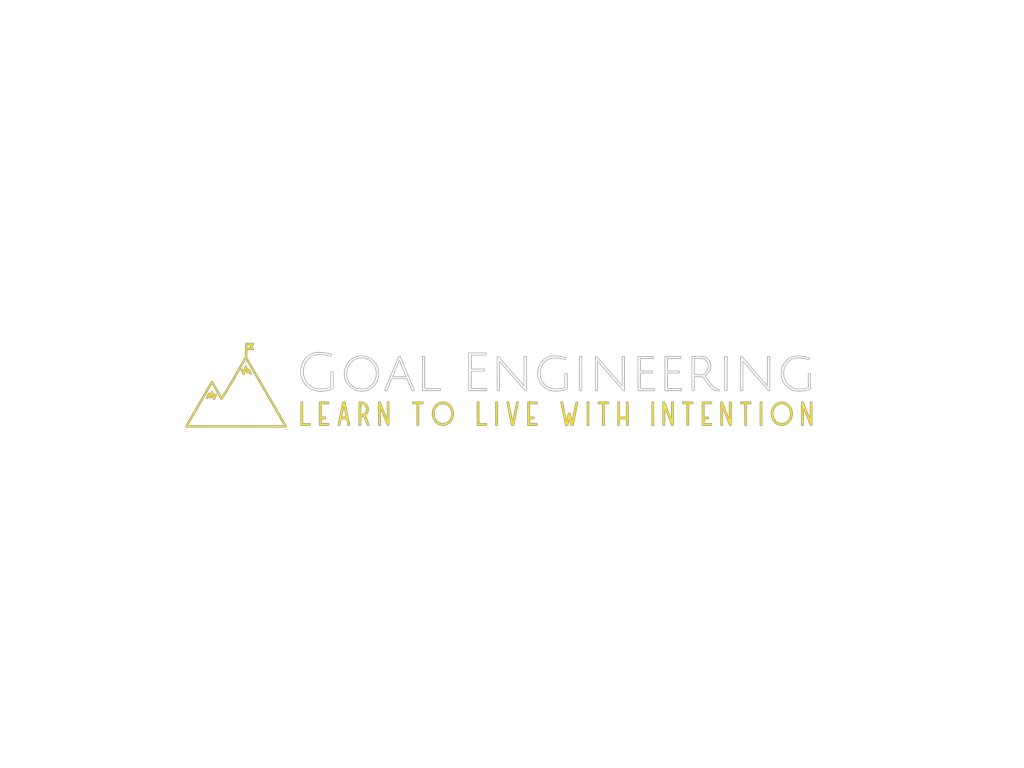For nearly 27 years of my life, I was an expert in being hard on myself. Even the littlest things that went wrong would make me so angry at myself that I couldn’t function. I’d waste days devastated at just one mistake, and I had no idea how to fix it. But everything changed when I discovered Learned Optimism. The keys I learned in the book that turned my life around are just what you need to discover how to stop beating yourself up too.
If you want to stop beating yourself up, you need to learn that it’s not what happens to you that gets you down, it’s what you think those events mean about you. Instead of reacting immediately with judgment, pause after something happens that gets you down on yourself. Then follow these steps as you analyze your thinking patterns:
- Examine your beliefs, which include what you think the event means about you or the world.
- Consider the consequences of those beliefs, including how they make you feel or act.
- Dispute the beliefs by first looking at the evidence you have of whether or not they’re true. Then examine alternative truths that you may be missing, the implications if your worries are true, and whether or not the thoughts are even useful.
- Experience the energization that comes from annihilating the lies that your brain tells you when something goes wrong with the power of truth.
This practice transformed me from being habitually hard on myself to recovering from setbacks within as little as five minutes. They will do the same for you if you’ll regularly practice them.
I didn’t just make them up though, they’re rooted in science. We’ll get there in a moment, but first, you’ve got to change your mindset.
First, Shift Your Mindset
Years ago a man named Martin Seligman discovered an alarming fact about psychology.
The best that psychologists could do was “make miserable people less miserable” Seligman said himself in a TED talk.
He continues by saying that “in our rush to do something about repairing damage, it never occurred to us to develop interventions to make people happier.”
In The Happiness Advantage, Shawn Achor identifies another worrying truth about our study of being hard on ourselves:
“for every one study of happiness and thriving there were 17 studies on depression and disorder.”
You backtrack every time you overanalyze your decisions and start beating yourself up. You’re making the mental difficulty worse by focusing on trying to cease what you don’t want instead of trying to focus on what you do want, which is happiness.
So how do you stop?
It begins with shifting your mindset to begin focusing on the things you do want and that which you know will make you happy. Focus on why you are improving, and what you are running towards, instead of what you are running from.
It’s not just enough to not be unhealthy, or “make miserable people less miserable.” Nobody says things like “I wish I were less miserable” when they’re beating themselves up. What you really want is to be happy, so that’s where you need to aim.
Think of it this way. Turning yourself around when you’re being hard on yourself is like changing the direction of a car.
First, you have to apply the brake to stop the acceleration in the wrong direction.
Then, and even as you begin to slow yourself down, you begin turning the wheel towards the direction you want to go.
You need to focus more on turning yourself in the directions you want to go. Now let’s take a look at the first step, which is halting your movement toward being hard on yourself.
It’s Not Your Fault That You’re So Hard on Yourself
The first part of this first step is admitting to yourself that it’s not your fault. Trying to find someone to blame at all will not help you stop going in the direction of beating yourself up.
Like trying to kill a venomous snake that has bitten you, playing the blame game with your problems only ends up hurting you more.
You’re burnt out from working too hard to keep up with difficult times.
You are trying to overcome deep-seated dysfunctional core beliefs that were instilled within you as a child. Not that your parents and others were at fault themselves, they simply didn’t know any better. Society is just experiencing the growing pains of progress.
It doesn’t help that the world is against you. Between the negativity of politics and a 24-hour cycle of bad news, it makes sense that you would feel down with seemingly nowhere to turn for relief.
But it’s time to break free, starting with your mindset.
The 3 Mindsets That Keep You In Mental Distress
Seligman teaches three lies that get you stuck in the pattern of beating yourself up:
- Permanence is believing that you can never resolve your problems. It’s the mistaken idea that they are permanent.
- Pervasiveness is the lie that when something is wrong, it means that your entire life is a chaotic mess. It’s when you consider every little thing a complete catastrophe.
- Personality means wrongly thinking that it’s all your fault, that you brought this upon yourself because you are a terrible person.
These are the three areas in which you need to focus on stopping bad thoughts and behaviors.
Your core beliefs that you obtained in childhood, whether dysfunctional or not, are the reason for every thought you have. When something goes wrong, your automatic thoughts lead you into the downward spiral of being hard on yourself.
It’s not the situation that is causing you pain and suffering, it’s what you think about the situation that makes you struggle.
It’s not failing the test that makes you feel terrible about yourself. The struggle comes from the lie you tell yourself that because you failed, you’re going to have to quit school and work at McDonald’s your whole life.
Getting pulled over doesn’t pull you down, it’s the mistaken thought that the rest of your day is ruined, or that you are a complete failure because this “always” happens.
It’s doesn’t come from the words of someone on the internet bringing you pain; it’s thinking incorrectly that they are right about you and that they are attacking you personally.
So what can you do about it?
Turn Yourself in the Direction You Want to Go
At the end of Learned Optimism, Seligman gives one of the most useful resources I have ever utilized for dealing with these types of thoughts that put us down.
Again, remember, it’s not your fault that you think this way, and you can overcome it. Have the faith to try these exercises out. Be consistent with them over a long time, and you will find that they work.
The easiest way to remember this is to think of it as the ABC’s of how to stop beating yourself up. This method later becomes the ABCDE method for functional thinking, which we’ll get to in a minute.
The best way to practice this is by writing out your answers. I did that for the first few months of learning it and eventually internalized it, so I think through this on autopilot.
So grab a pen and paper or make a note on your phone, write what each step means, and set up a template you can use to regularly go through each of them when bad things happen to you.
The ABC’s of Learned Optimism
A stands for adversity. Write down whatever difficulties you experience each day, like failing a test, getting pulled over, or being yelled at on the internet. Only include what happened.
B stands for belief. Write your thoughts about what that specific moment of adversity means about you and your life. Consider how permanent, personal, and pervasive your thoughts are.
C stands for consequences. How do your beliefs about the adversity make you feel? Write those feelings down.
Try just writing out these three a few times each day for a week to get comfortable with the technique. When I first practiced this, I used a note-keeping app on my phone. Anytime adversity came up that would make me start beating myself up, I would write about it.
Next, we get into the methods to fend off unwanted thoughts.
How to Rise Above Your Incorrect Thinking Patterns That Get You Down
After recording your adversities, beliefs, and consequences for a few days continue doing those three, but with each incident you record, start including the following:
D stands for disputation. You can dispute your automatic thoughts that lead you to spiral downward by arguing with them. Focus on disputing the beliefs that you usually have. This is how you can interrupt the spiral and turn around the consequences.
It even gets to be a lot of fun as you get good at it, especially when you consider your thoughts as if they were another person, the enemy you’re fighting against.
There are four methods of arguing with yourself: evidence, alternatives, implications, and usefulness. Let’s explore what each of these mean:
Evidence
This is when you examine what facts you have to back up your beliefs. For example, if you did fail that test, what evidence do you have that you will not have to quit school and work at McDonald’s your whole life? You might find that you are doing well in a lot of other classes and that this is only one test.
Alternatives
This means looking at the different reasons for a particular outcome. For example, that person that yelled at you online might just be grumpy. In most cases, when I get negative comments online, I look at the profile of the person, and they tend to leave other negative comments elsewhere. It’s not their problem with you, it’s their problem with themselves!
Implications
This step involves decatastrophizing. To quote Seligman: “Even if my belief is correct, you say to yourself, what are its implications?” For example, even if you did overeat one night, does that really mean that you are a total failure at eating healthy? No, it’s just one moment! Eliza Kingsford uses this very technique in her book Brain Powered Weight Loss to help people lose weight and keep it off.
Usefulness
This is when you have to perform well at the moment, so it isn’t useful to think about your beliefs about whatever has happened previously. One example is when playing an instrument on stage, you can’t focus on why you missed a note. It’s just not worth thinking about in that moment. You can always examine it later.
Seligman gives more examples of each of these disputation techniques in his book, so check it out if you want to learn more.
The Final Step: Energization
Now, to complete the ABCDE method, we have E, which stands for Energization. Once you have disputed your negative beliefs, you will want to write down how much better you feel after doing so. Think specifically about how proud you are for not spiraling, and what you did to avoid it.
This is as far as Seligman goes in explaining how to avoid spiraling thoughts.
But what if you took it one step further?
Use Learned Optimism to Discover How Your Awesomeness is Permanent, Personal, and Pervasive
What if, for a week, you looked at everything you did right and worked through some of your beliefs about it?
Spiraling downward is malicious enough to affect not only your adversities but your accomplishments as well.
How often do you easily wave off something amazing you did as just chance? What if you could overcome this tendency as well? Doing so can not only make you not beat yourself up, but turn you into someone who is actually happy with who you are.
Take your accomplishments and, for a week or so write down your beliefs about them and the consequences. In other words, switch out “adversity” for “accomplishment” and run through the entire ABCDE’s again.
Focus on your beliefs, good and bad and the consequences of them. Dispute any notion that you performing well was just luck, and instead recognize the awesomeness within you.
What evidence do you have that your accomplishments are permanent, personal, and pervasive?
When in the past have you found yourself winning like you are now, and how does that prove that you are a successful person?
How can you see that you are an awesome person, that you always seem to do amazing things, and that everything in your life seems to work out?
You’ll quickly find that you are amazing, and you deserve to think that you are. You will learn to get past beating yourself up and start to instead truly believe in yourself.
Summary & Conclusion
I’ve been using the methods in Learned Optimsm for almost three years now and they’ve completely altered my life for the better. They’ve made the pandemic far easier than it would have been otherwise. And even before that these principles helped me through the deaths of family members, failing a major licensing exam, getting fired, having children in the hospital, and much more. I’m confident that these steps will change your life for the better.
Seligman’s methods are powerful tools to teach you how to stop beating yourself up and even better, how to realize how amazing you are. Here are those steps again:
- Adversity or Accomplishment
- Belief
- Consequence
- Disputation
- Evidence
- Alternatives
- Implications
- Usefulness
- Energization
Start today by writing them in a note on your phone and going through them whenever something goes wrong.
Practice for a few weeks and before you know it you’ll begin to internalize the truth that you don’t need to be so hard on yourself and that you are a wonderful person with incredible strengths!





